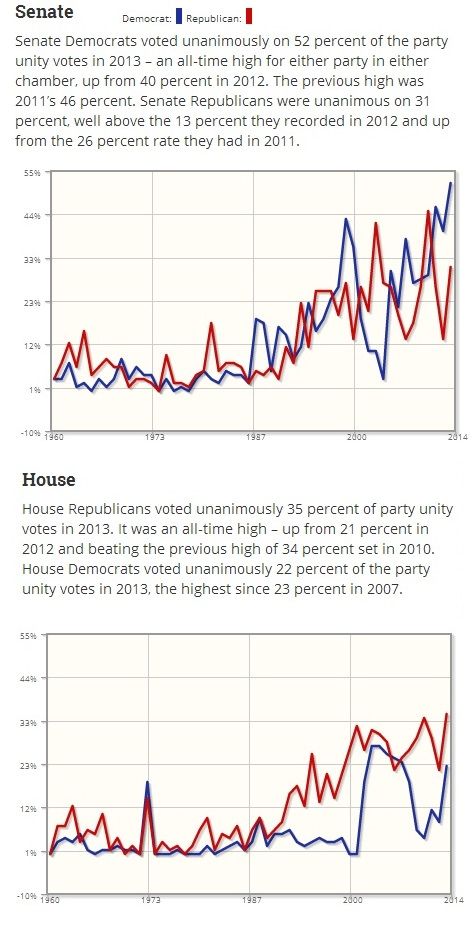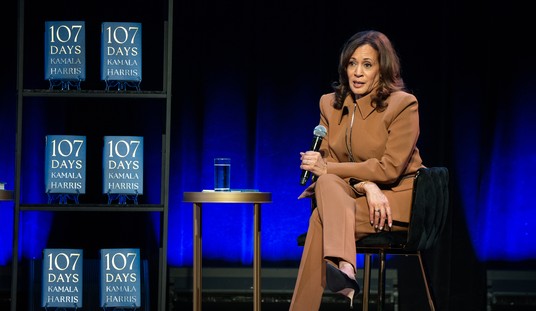
Vulnerable Senate Democrats want desperately to distance themselves from an unpopular President and cast themselves as independent voices, not partisan rubber stamps. The numbers say otherwise: according to a recent study by Congressional Quarterly, nearly 70% of all votes in the Senate in 2013 involved party-line votes, close to an all-time high, and in more than half of those votes, Harry Reid’s Democratic caucus was unanimous – the highest level of party unanimity in the history of either House of Congress.
Once upon a time, the U.S. Senate was seen as a deliberative body. Unlike the House, where the majority has always exercised iron rule over floor votes, the Senate prided itself on the independent role of each Senator. Senators would debate and dispute the great issues of the day, and an individual Senator could force the Senate to vote on amendments, whether or not specific to the purpose of the bill, any time new legislation went to the floor. Not only did this process give each Senator a potential role in the shaping of important national legislation, but it also allowed activist Senators (especially in the minority party) to force their colleagues to go on the record on the controversial issues of the day.
Since Harry Reid became the Majority Leader in 2007, that role has faded; Reid has strangled the amendment process, and used the “nuclear option” that Reid once denounced in order to bulldoze the minority’s traditional weapons for holding up nominations. The result has been a Senate that looks much more like what the House is expected to be: a place of party-line votes and absolute control by the Majority Leader. Which suggests that voters should place little stock in the election-year efforts of Democrats like Mark Pryor, Mary Landrieu, Mark Begich, Kay Hagan and others to cast themselves as something other than pawns of the Obama White House.
Here’s the key CQ finding: on party-line votes (defined as votes where a majority of one party lines up on one side, and a majority of the other party lines up on the other), Senate Democrats in 2013 were unanimous 52% of the time, the highest percentage of lockstep votes that CQ can locate in either party in the history of either chamber:

And that sky-high percentage of lockstep votes comes at a time when those party-line votes are themselves near a record-high proportion of the Senate’s business, almost 70% of all votes:

Overall, CQ found that the average Senate Democrat voted with the party a record 94% of the time.
Don’t be fooled by campaign ads where red-state Senate Dems embrace guns, oil, jobs, and freedom. In Washington, they really are all the same.













Join the conversation as a VIP Member